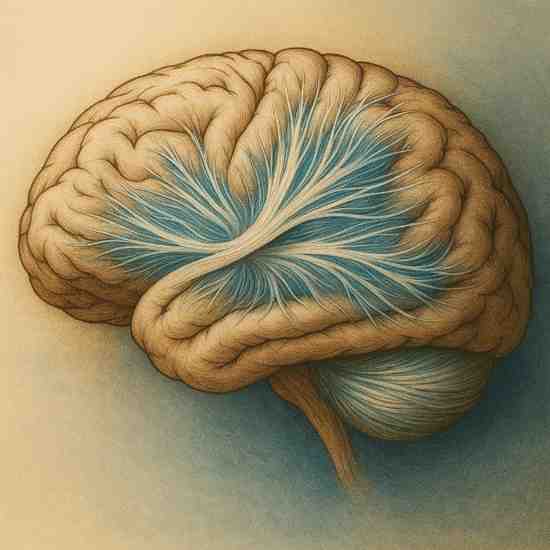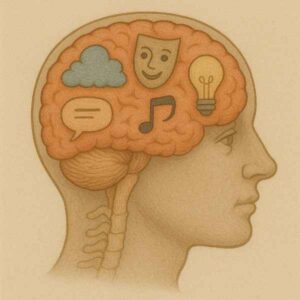If the cortex is the city where thoughts are born, the white matter is the road network that carries them around. It’s what lets the brain’s neighbourhoods talk to each other. The motor area sends a memo to the spinal cord. The temporal lobe files a report to memory. The frontal lobe emails the cerebellum (sometimes forgetting to ‘cc’ logic). It’s a busy place. The white matter doesn’t sparkle under the microscope like the grey matter does, but it’s the reason we function as one coherent story instead of as a collection of confused committees.
A few months ago, I saw Ravi, a burly man in his late 50s who came in after a small stroke. He could move his limbs, remember his address, even crack jokes. But his wife noticed something odd. “Doctor,” she said, “he’s talking fine, but not connecting.” When I asked him to show me his left hand, he showed me his right. When I asked him to draw a clock, he placed all the numbers on one side. His brain was a city with working buildings but a collapsed bridge. The cortex was intact; the white matter had short-circuited.
On the MRI, a lesion sat in the deep white matter near the internal capsule – a small clot in a critical junction. The cortex was sending instructions; the body just wasn’t receiving them on time. I explained to his wife that the white matter is made up of fibre tracts, bundles of nerve fibres (axons) that carry messages between distant parts of the brain. When these cables fray, it’s like losing network coverage. “So, he’s in airplane mode?” she asked. “Exactly,” I said.
Under the microscope, white matter looks less like matter and more like meaning – gleaming fibres running in every direction, shimmering like silk threads. They’re coated in myelin, the brain’s version of insulation, helping signals travel fast. Every emotion, every gesture, every word that escapes our mouths depends on these fibres firing in synchrony. When they falter, people lose not just movement or speech, but connection. They become islands.
Ravi’s stroke was small, and with therapy, his words slowly began to find their roads again. Watching him recover was like watching a city rebuild its flyovers, one lane at a time. By the fourth week, his wife said, “He’s back to arguing, doctor!” That’s how I knew the white matter had reconnected.
The brain, like society, survives on connection. The cortex may create ideas, but it’s the white matter that carries them into the world. It’s the unsung middleman, the Mumbai local that makes the city function. When it breaks down, chaos ensues – both in the brain and on the tracks.
We surgeons are always navigating through these white matter tracts to reach deeper tumours or aneurysms. The challenge is to get where you need to without cutting the wrong cable. Each fibre bundle carries a different signal: movement, vision, speech, thought. It’s a daily exercise in restraint. Operating in the brain’s white matter feels a bit like rewiring an entire city during a power cut and hoping the lights come back on in the right homes.
I sometimes think our white matter is also a metaphor for how we live today: endlessly connected, rarely communicating. We have more networks than ever, but fewer true connections. The brain, at least, has the excuse of anatomy; we have only distraction.
One evening, Ravi came for a follow-up. He was sharper, laughing, even driving again. “I’m fine now,” he said, “but my wife still said I forgot her birthday!” “That’s not your white matter,” I said. “That’s a universal male deficit. No known cure.”
The white matter is not glamorous. It doesn’t think or dream or compose poetry. But it keeps everything that does in conversation. It is the quiet fabric that turns thought into motion, intention into speech, and chaos into coherence. When I look at it under the microscope, it reminds me that medicine is not just about fixing organs but restoring connections – between brain and body, and sometimes, between people.
We spend our lives trying to stay connected: to Wi-Fi, to work, to one another. But the most important connections are still inside our heads – unseen, silent, endlessly patient. And when they falter, all we can do is wait, hope, and try to rebuild the bridge. The next time your internet drops, be grateful it isn’t your white matter. One reconnects with a reboot; the other requires a miracle (or me).




